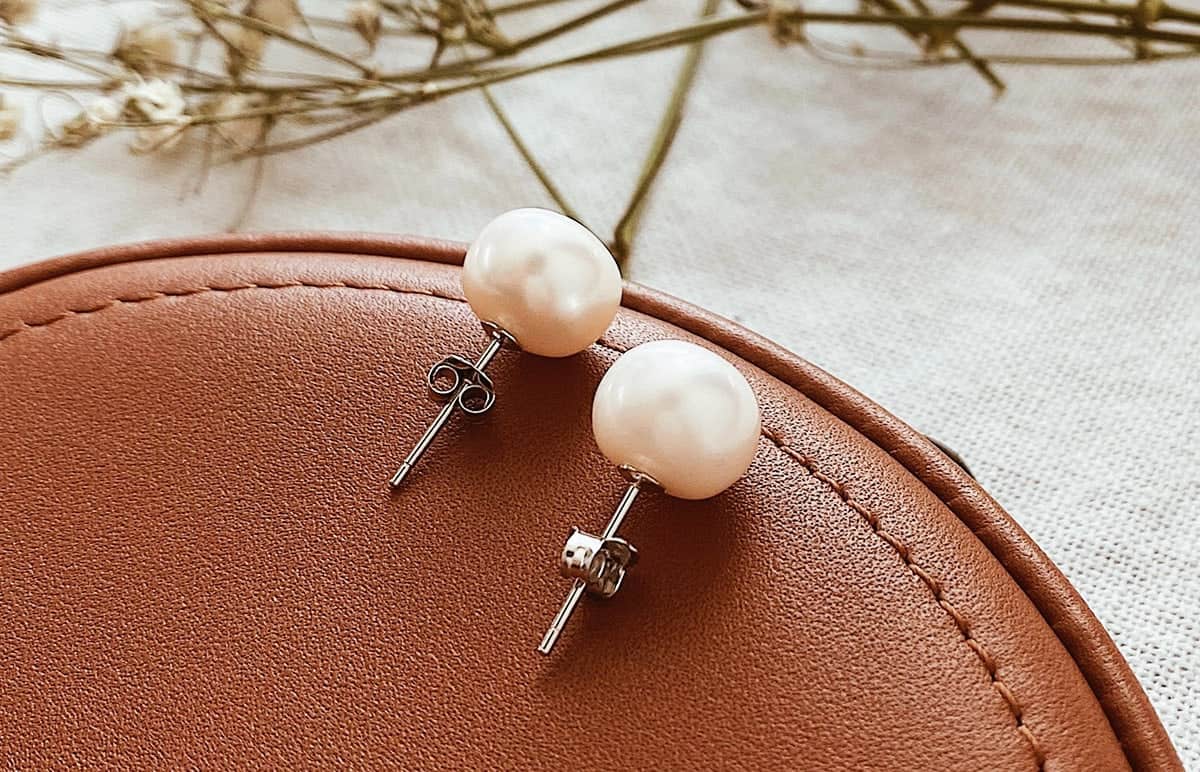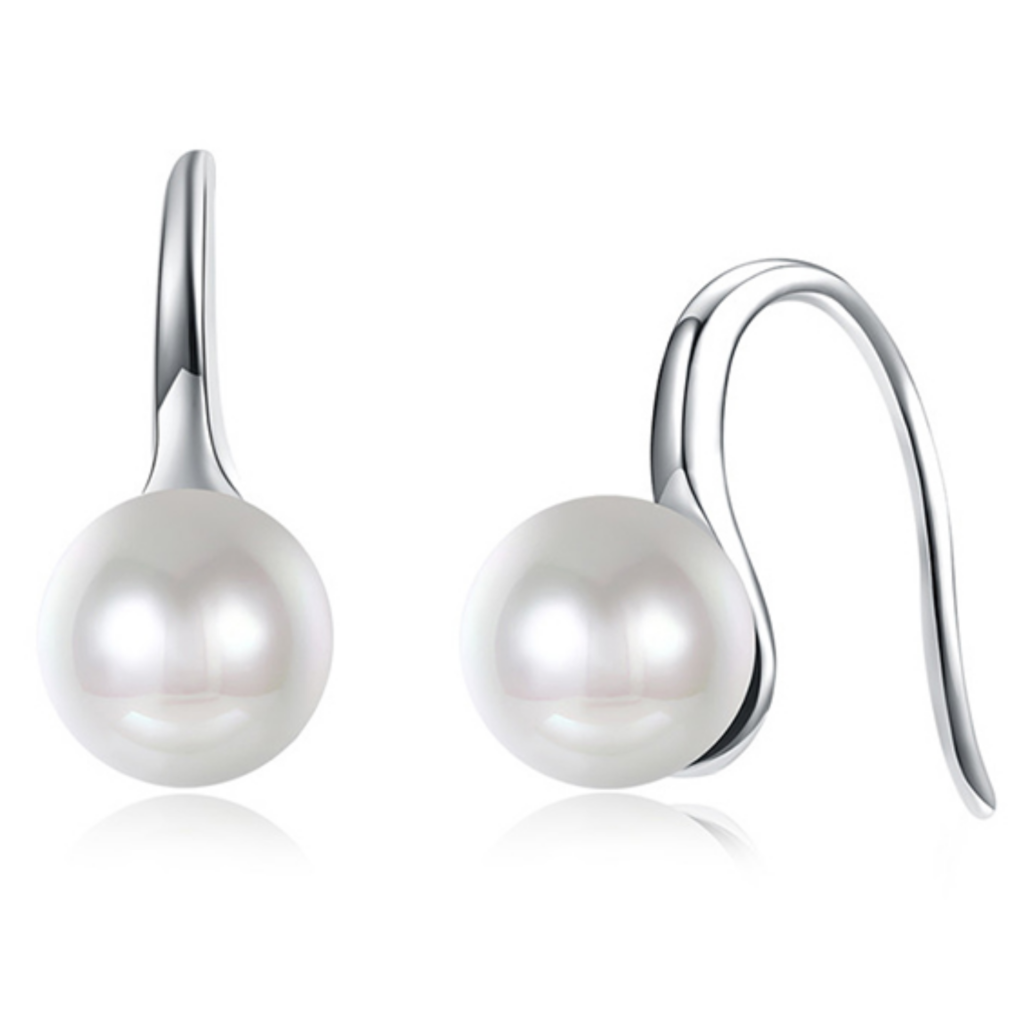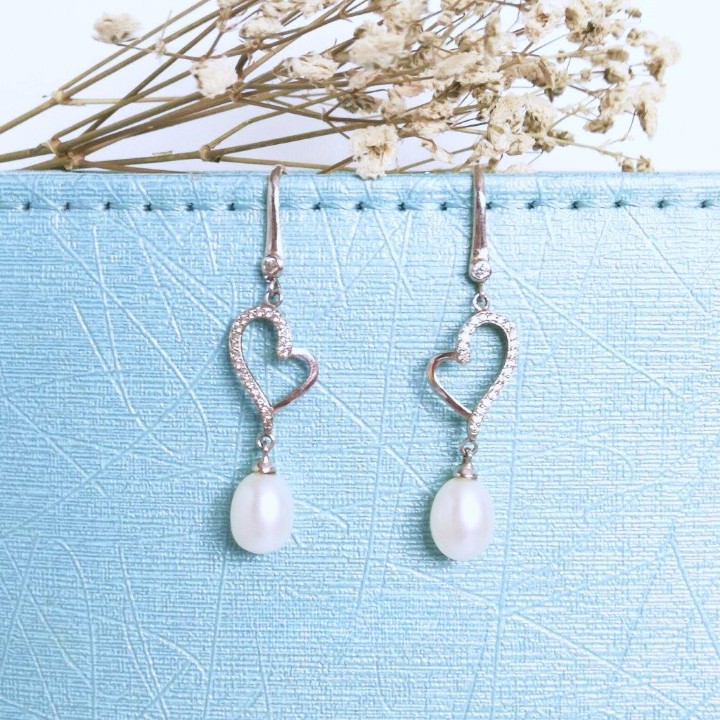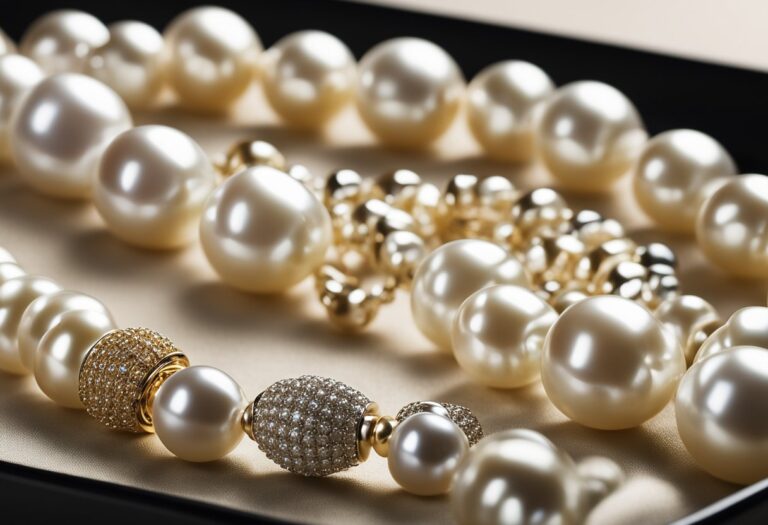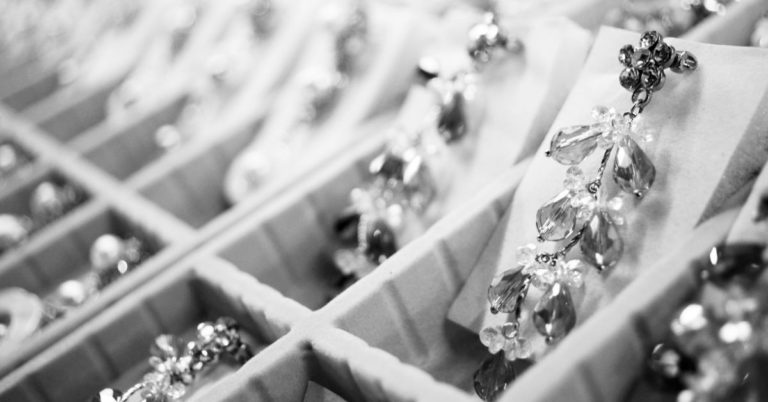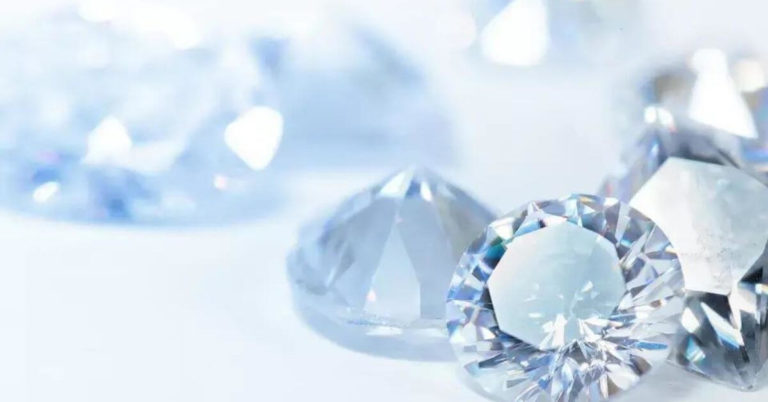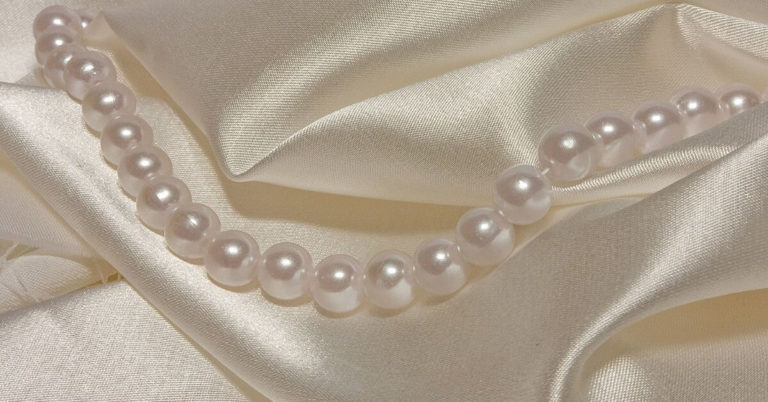Cultured Pearls: Real and Elegant Gem At Affordable Price
Cultured pearls are a timeless addition to your jewelry collection, offering an elegance that complements both casual and formal attire.
Understanding the distinction between various types of cultured pearls can enhance your appreciation for these gems.
When considering cultured pearls for your collection, note the pearl’s size, shape, color, and luster – these factors primarily determine the pearl’s value and beauty.
What is a Cultured Pearl?
Cultured pearls are grown within farmed mollusks, where a technician implants a nucleus to start the pearl’s formation. Often a shell bead or piece of mantle tissue, is surgically inserted into a living mollusk. The implant triggers the mollusk to secrete nacre, the lustrous substance that forms the pearl.
All cultured pearls are gems created with human assistance in either freshwater or saltwater environments.
Types of Cultured Pearls
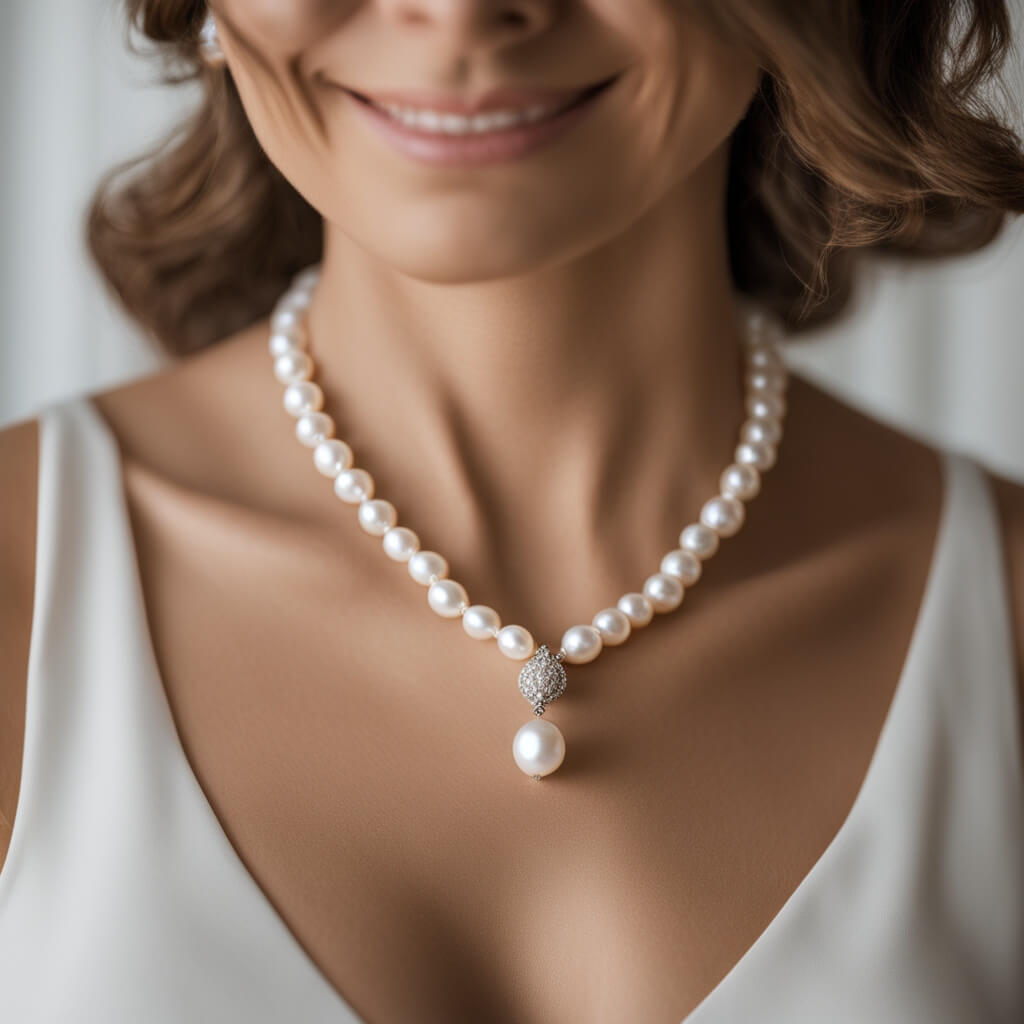
You’ll discover that cultured pearls come primarily in two varieties, each with its unique characteristics and beauty. The distinction lies in the water source and the methods used by pearl farmers during cultivation.
Cultured Freshwater Pearls
Freshwater Pearls are cultivated in mussels, primarily in lakes and rivers. They are known for:
- Variety: Offering an extensive array of shapes, from near round to baroque.
- Color Range: Spanning a color palette that includes white, cream, and pastel.
Key Differences:
| Freshwater Pearls | Saltwater Pearls |
|---|---|
| Typically nucleated with tissue | Often nucleated with a bead |
| More irregular shapes | More consistently round shapes |
| Thicker nacre layers | Thinner nacre but higher luster |
Cultured Saltwater Pearls
Saltwater Pearls, contrary to their freshwater counterparts, are grown in oysters in oceanic environments. They boast:
- Luster: A distinctive glow that radiates from the nacre’s quality.
- Uniformity: More consistent in shape, especially within the Akoya variety.
Pearl cultivation across both mediums ensures you receive a gem that’s been created with environmental consciousness, and with each purchase, you’re supporting a sustainable practice. Whether you gravitate towards the diverse freshwater pearls or the classic saltwater varieties like Akoya, rest assured your selection contributes to the harmony between nature and the pearl farming industry.
Physical Attributes and Characteristics of Cultured Pearls

Cultured pearls are known for their uniformity and range of options available in luster, color, shape, and size. Unlike natural pearls, these pearls are cultivated with precision, resulting in a diverse spectrum of beautiful and accessible gemstones.
Luster and Color
Luster refers to the reflective quality or shine on the surface of a pearl. Cultured pearls typically exhibit a rich luster, although it may be less sharp compared to natural pearls. This sheen is the result of nacre layers, which are applied more consistently in cultivation.
Color variations in cultured pearls can be vast. These pearls are not confined to the hues formed naturally. From traditional white and cream to exotic black, the range includes delicate pinks, greens, and even golden tones. Saltwater pearls such as the Akoya are cherished for their white and cream colors, while Tahitian pearls are esteemed for their unique dark shades.
Shape and Size
Cultured pearls come in a multitude of shapes, ranging from the classic round to button, drop, and the more unique baroque. Each shape possesses its own charm and relevance in jewelry making.
The sizes of cultured pearls can also vary, influenced by the time they are left to grow inside the mollusks. Generally, Akoya pearls are smaller, with sizes around 2mm to 11mm, while South Sea and Tahitian pearls can grow much larger, reaching sizes up to 20mm.
Comparison of Shapes and Sizes
| Pearl Type | Typical Shapes | Size Range |
|---|---|---|
| Akoya | Round, Oval | 2mm – 11mm |
| Tahitian | Round, Baroque | 8mm – 20mm |
| South Sea | Round, Drop | 9mm – 20mm |
| Freshwater | Various, Baroque | 3mm – 15mm |
Your preferences in luster, color, shape, and size will influence your selection of cultured pearls, making them a versatile choice for all kinds of jewelry.
How Are Cultured Pearls Formed?

Cultured pearls are the result of a meticulous human-initiated process on pearl farms. Unlike natural pearls, which form in oysters randomly, cultured pearls involve careful human intervention.
Pearl Farming Process
Nucleation This is the primary step in pearl farming. In freshwater pearl farming, technicians introduce a piece of mantle tissue from a donor mussel into a host mussel. The tissue irritates the host, causing it to secrete nacre—a lustrous substance forming the pearl.
| Natural Pearls | Cultured Pearls |
|---|---|
| Formed without human help | Initiated by human processes |
| Very rare | Commonly produced |
| Typically found in oysters | Grown in mussels and oysters |
Pearls grow inside the mollusk over 2 to 5 years. Successful growth results in a range of pearl types, including Akoya pearls, known for their roundness and luster, Tahitian pearls, famed for their dark colors, South Sea pearls, valued for their size and satin luster, and freshwater pearls, appreciated for their affordability and array of shapes.
Overtime, farmers monitor the pearl’s development. They care for the host mollusks in optimal conditions to allow the finest quality pearls to form. Once matured, pearls are harvested, cleaned, and often polished to reveal their full beauty.
In your jewelry box, you may have a piece featuring one of these lovely gems, each with its unique story from the depths of a pearl farm to the finished jewelry that adorns.
Quick Note Between Natural Pearls and Cultured Pearls
When talking about pearls, there are two types of pearls to consider: natural and cultured. Understanding their differences can help you make a better decision when you are buying any pearl jewelry.
- Creation: Natural pearls form by chance in the wild when an irritant accidentally enters a mollusk. The chances of finding a natural pearl are slim, about one in every 100,000 mollusks. Cultured pearls, however, are grown on pearl farms where a technician implants a seed into a mollusk to start the pearl-making process.
- Appearance: Typically, natural pearls tend to be smaller and less uniform in shape. Cultured pearls are often larger and rounder due to controlled conditions.
- Availability: While browsing for pearls, you’re likely to encounter cultured pearls. Natural pearls are a rarity and usually found at auctions due to their scarcity.
Here’s a simple comparison to help you:
| Aspect | Natural Pearls | Cultured Pearls |
|---|---|---|
| Formation | Accidental; one in 100,000 mollusks | Intentional; almost every mollusk |
| Origin | Formed naturally inside wild oysters or mollusks | Human intervention leads to their creation in oysters or mollusks |
| Size | Generally smaller | Larger |
| Shape | Often asymmetrical, irregular, unique shapes | More likely to be round due to the inserted nucleus |
| Nacre | Multiple layers create luster and color | Thickness of nacre varies based on time in mollusk |
| Harvest | From wild mollusks by divers | Farmed in controlled environments |
| Commonality | Extremely rare, sold at auctions | Widely available, seen in jewelry stores |
| Price | Typically expensive due to rarity | More affordable due to ease of production |
| Luster | Tends to be shinier with deep iridescence | Slightly less lustrous, but still desirable |
Unlike wild pearls which form naturally in the wild, cultured pearls develop in pearl farms, where conditions such as water temperature and cleanliness can be monitored to optimize the growth of the pearls.
Direct human intervention difference is crucial when distinguishing between natural and cultured pearls.
Caring and Maintaining Cultured Pearl Jewelry
Cultured pearls, known for their lustrous appeal, require thoughtful care to maintain their beauty and prolong their life. Being softer than other gems, cultured pearls demand a gentle touch to avoid scratches.
| Safe Practices | Practices to Avoid |
|---|---|
| Store in cloth pouch | Contact with harder materials |
| Wipe with soft cloth | Exposure to heat and intense light |
| Occasional damp cloth use | Chemicals and acids |
Ensure to separate your pearls from other jewelry to prevent abrasion. At home, placing them in a soft cloth or a dedicated pouch works wonders for protection.
Due to their organic nature, cultured pearls hold part water, making it crucial to avoid environments that could dehydrate them, such as direct sunlight or arid areas.
Daily Cultured Pearl Jewelry Maintenance
After each wear, a simple wipe with a clean cloth helps remove any residues that could damage the nacre, such as perspiration or cosmetic products.
For enhanced moisture retention, occasionally use a slightly damp cloth. This practice keeps the pearls lustrous.
Cleaning Your Cultured Pearl Jewelry
When it’s time to clean your pearls, opt for warm, soapy water. Rinse and allow them to dry on a towel. Ensure strung pearls are thoroughly dry before wearing to avoid string damage.
Yearly Pearl Jewelry Maintenance
Restring pearls annually, especially if your pearl necklace or bracelet is a staple in your wardrobe.
Worn strings can stretch or break, risking your valuable gems. If you’re uncertain about restringing or caring for your pearls, seek advice from pearl experts.
Your cultured pearl jewelry, such as pearl engagement rings and necklaces, stays elegant for years with the right care, contributing to their sustainable value in the jewelry market.
Buying and Owning Cultured Pearls
When you enter the world of cultured pearls, you’re investing in some of the most exquisite pieces of jewelry. Your understanding and choices will shape the value and pleasure you derive from these gems.
Cultured Pearls in the Market
Cultured pearls dominate the jewelry market, and nearly all pearls sold today are cultured pearls.
Unlike natural pearls, these pearls are created with human intervention in pearl farms. You’ll find options ranging from individual pearls to full pearl jewelry pieces, including necklaces, bracelets, and earrings.
Assessing Quality and Value
To assess the quality and value of cultured pearls, consider their luster, size, shape, and surface quality.
Real cultured pearls should have a high luster, meaning they’re shiny and reflective. The surface should be smooth, with minimal blemishes.
| Factor | High Quality | Lower Quality |
|---|---|---|
| Luster | Shiny with clear reflections | Dull with blurred reflections |
| Surface Quality | Smooth with few or no blemishes | Numerous blemishes or irregularities |
| Shape | Round or symmetrical | Irregular shapes |
| Size | Larger pearls | Smaller pearls |
Choosing the Right Pearls
When buying pearls, your choice should be influenced by the type of jewelry and the occasion for which you’re purchasing.
- Freshwater pearls, farmed in lakes and rivers, are known for their varied shapes and colors, making them a versatile option for jewelry designers.
- Saltwater cultured pearls, such as the round, white gems produced by the Akoya oyster, are often associated with classic pearl necklaces.
Think about whether you want a stunning pearl necklace from a designer collection for a special event or a simple yet beautiful bracelet for everyday wear.
Buying Your Lustrous Cultured Pearls
When considering cultured pearls for your collection, note the pearl’s size, shape, color, and luster – these factors primarily determine the pearl’s value and beauty.
While larger, perfectly round pearls with high luster are highly sought after, unique shapes and colors might catch your eye, reflecting your personal style.
Cultured pearls come in several varieties, each with distinct characteristics.
- Freshwater pearls provide affordable options in varied shapes and hues.
- Akoya pearls are known for their roundness and luster, making them ideal for necklaces.
- South Sea pearls offer larger sizes and unique colors.
- Tahitian pearls bring a spectrum of exotic colors.
When you hold a pearl and rotate it under light, if it has uniform shine and smoothness, it’s likely a cultured pearl.
The consistency in appearance is due to the controlled conditions of its making.
So, when you choose cultured pearls, your jewelry will exhibit a harmonious blend of beauty and uniformity, making them a favored gemstone for all.
Whether set in earrings, a bracelet, or draped around your neck as a strand of pearls, cultured pearls bring a combination of science, artistry, and natural beauty into your life.
- Freshwater Pearl Symbolism and Spiritual Meaning: Unveiling Mystical Associations
- How to Choose The Best Earrings for Your Face Shape (with Pictures and Celebrities)
- Earrings Styles: Popular Types of Earrings with Pictures
- Freshwater Pearl vs Cultured Pearl: Unraveling the Mysteries
- Cultured Pearls: Real and Elegant Gem At Affordable Price

